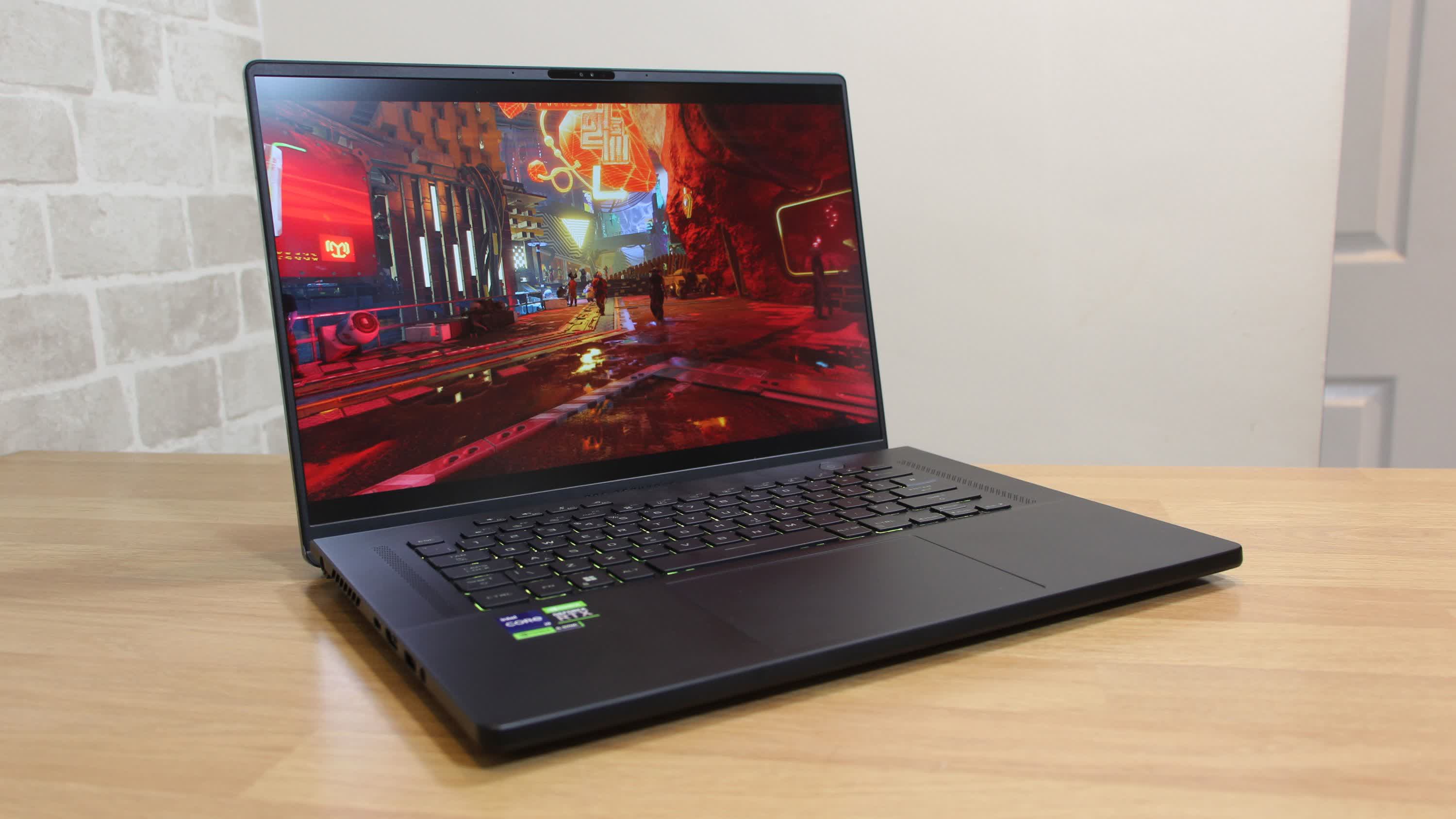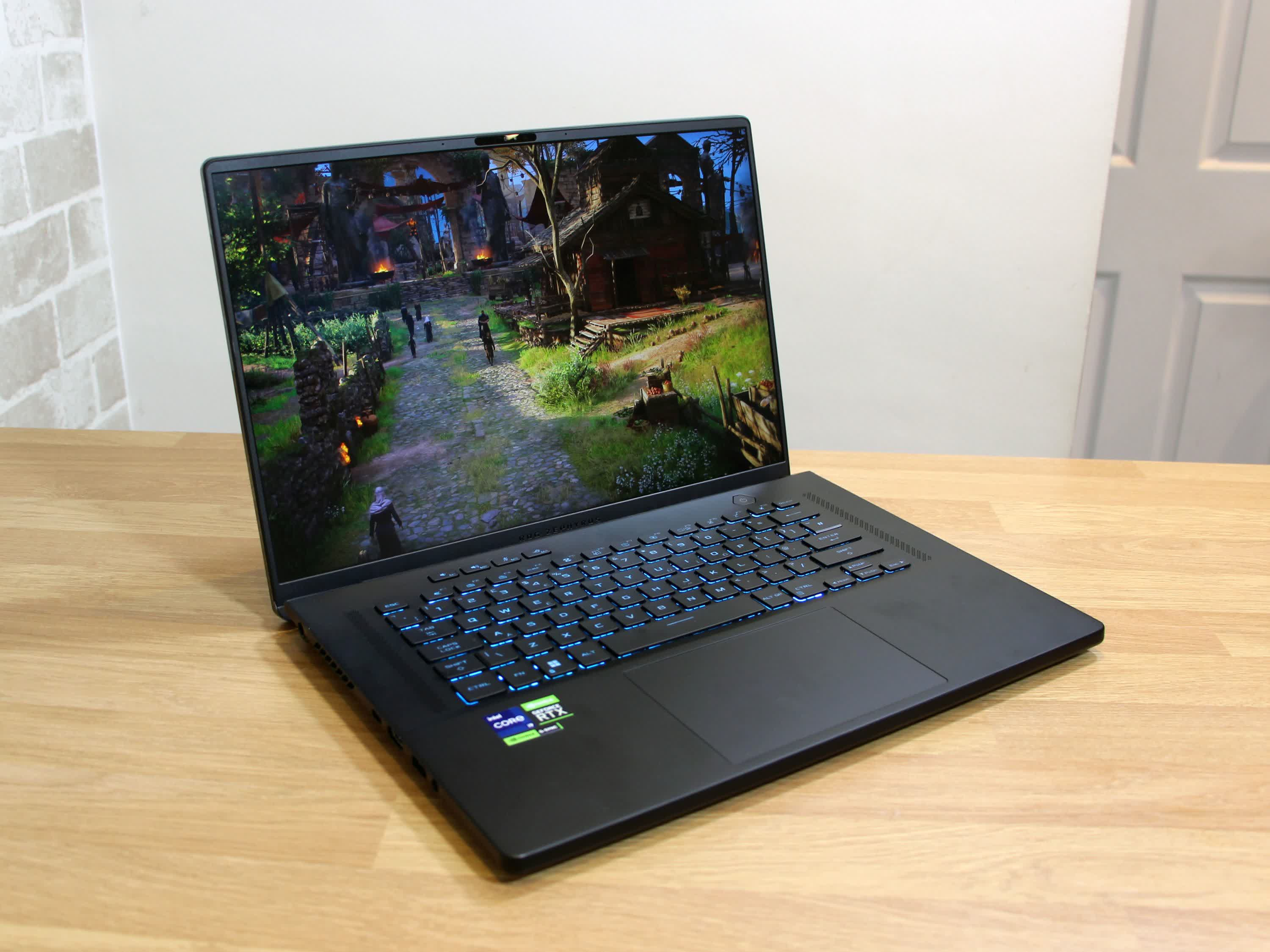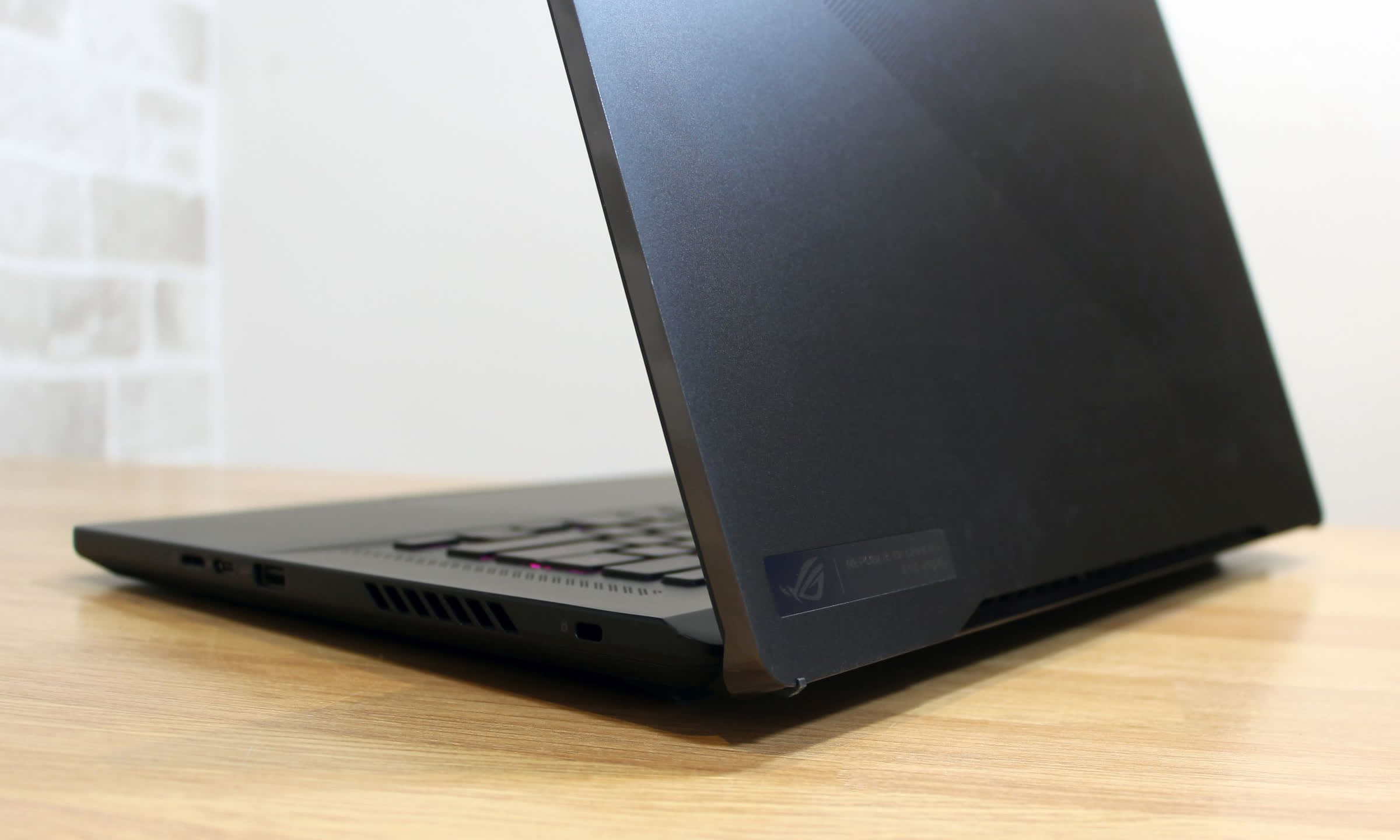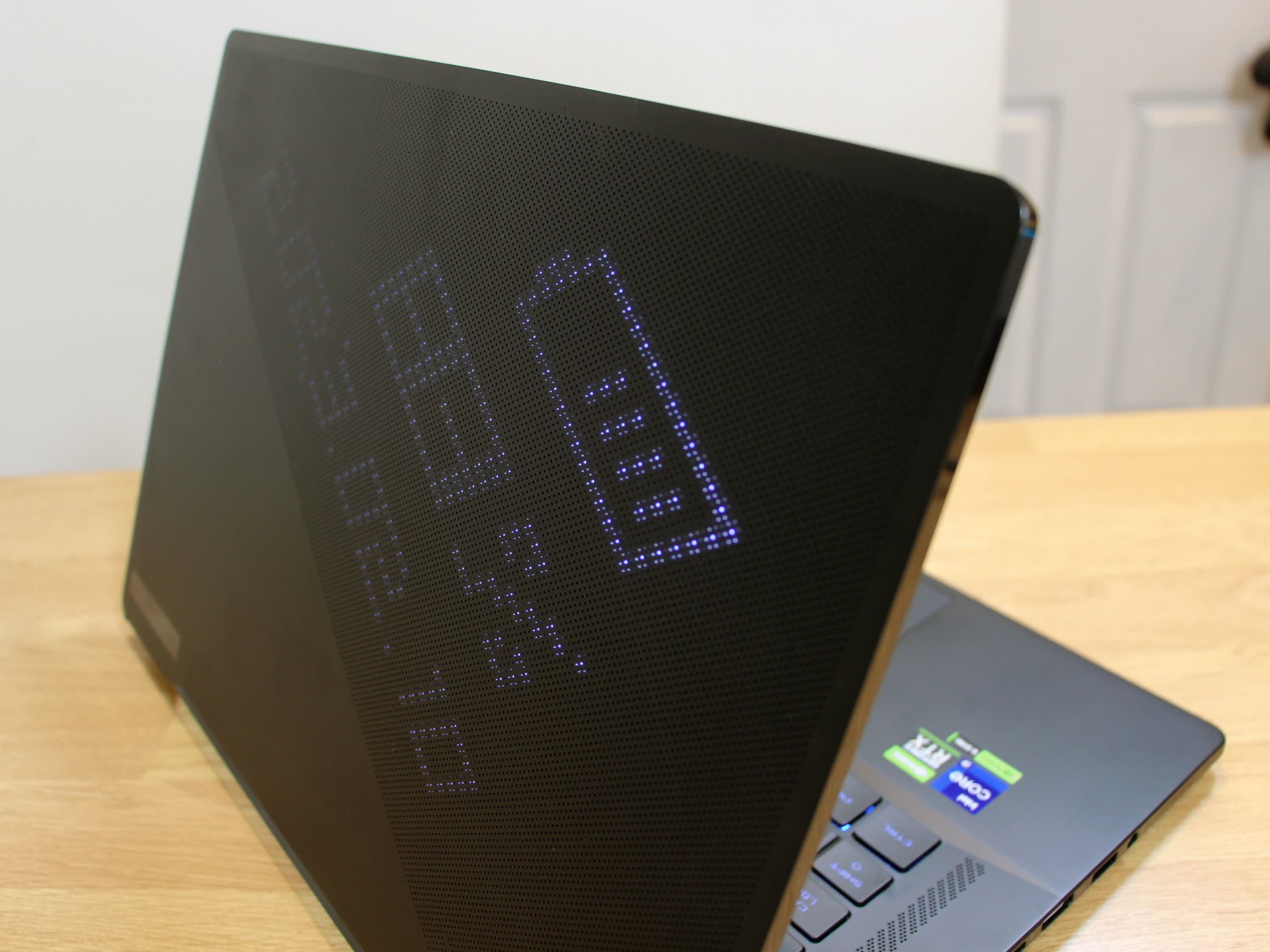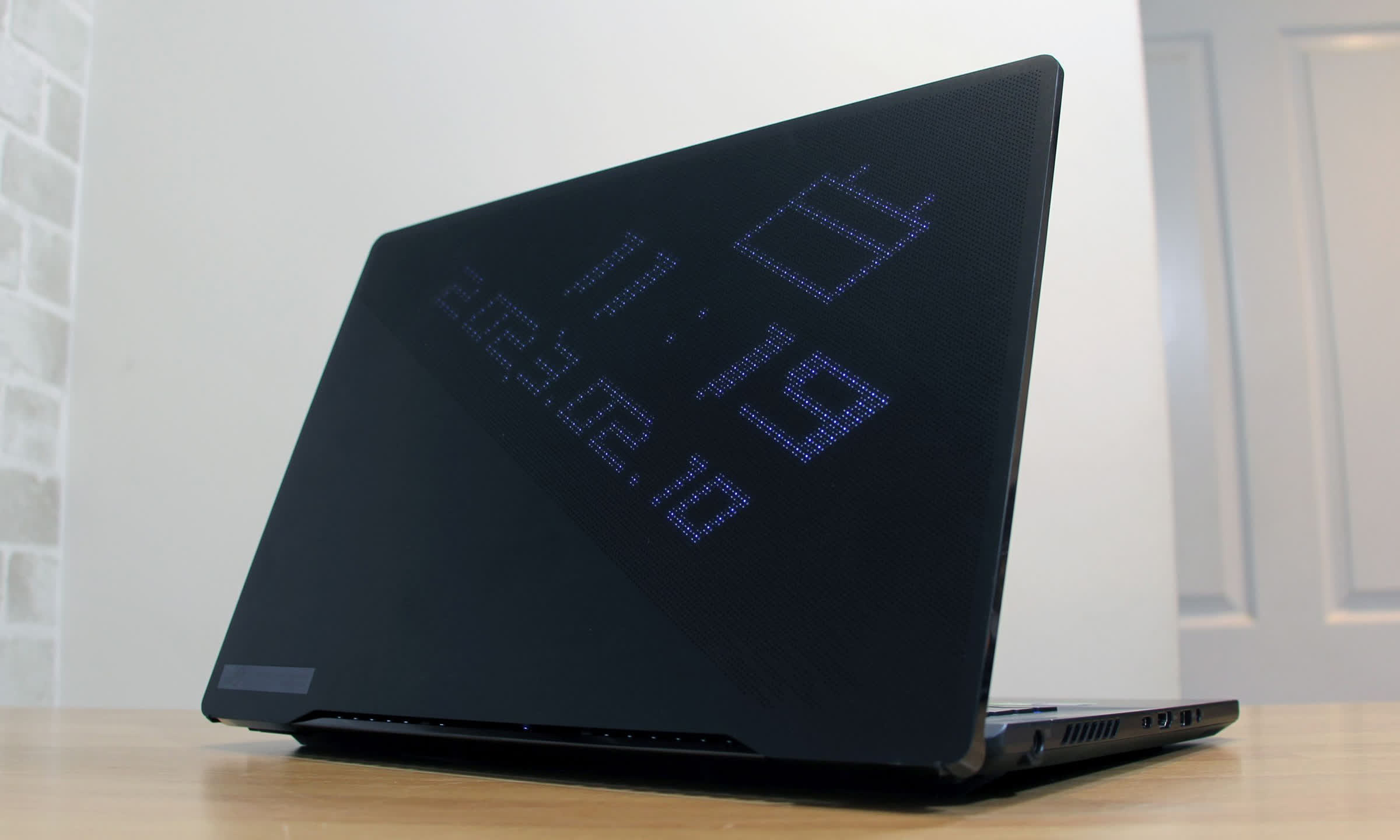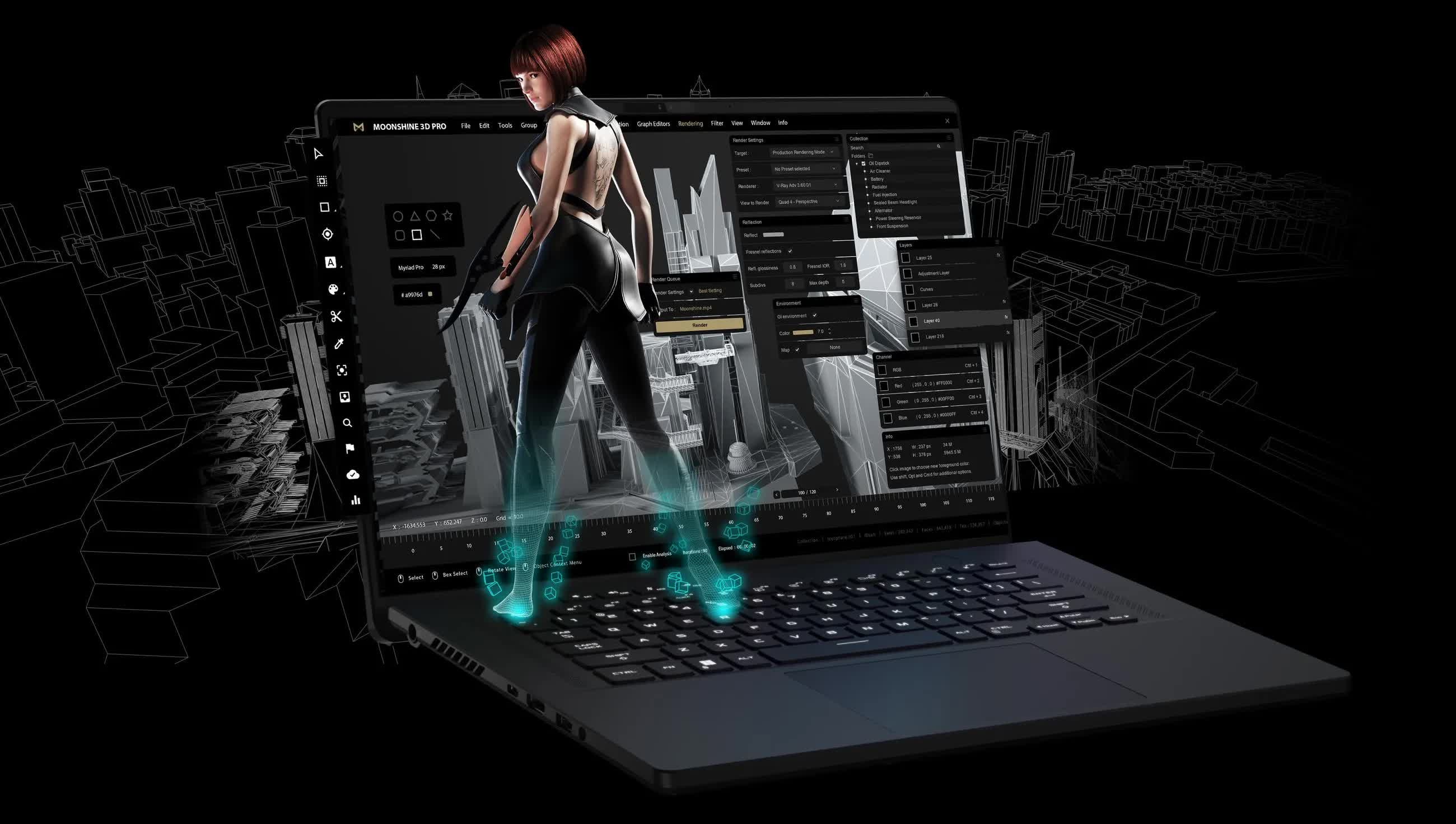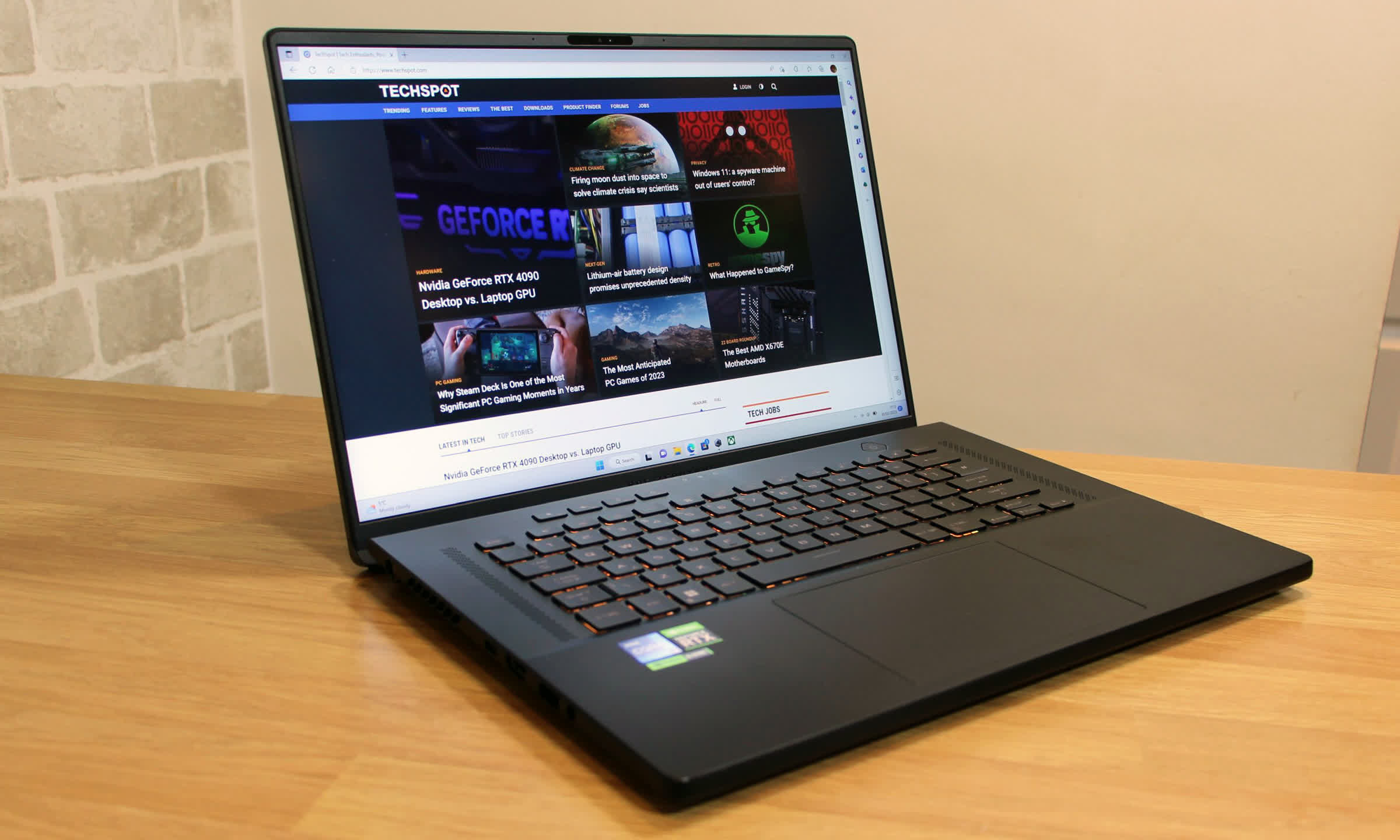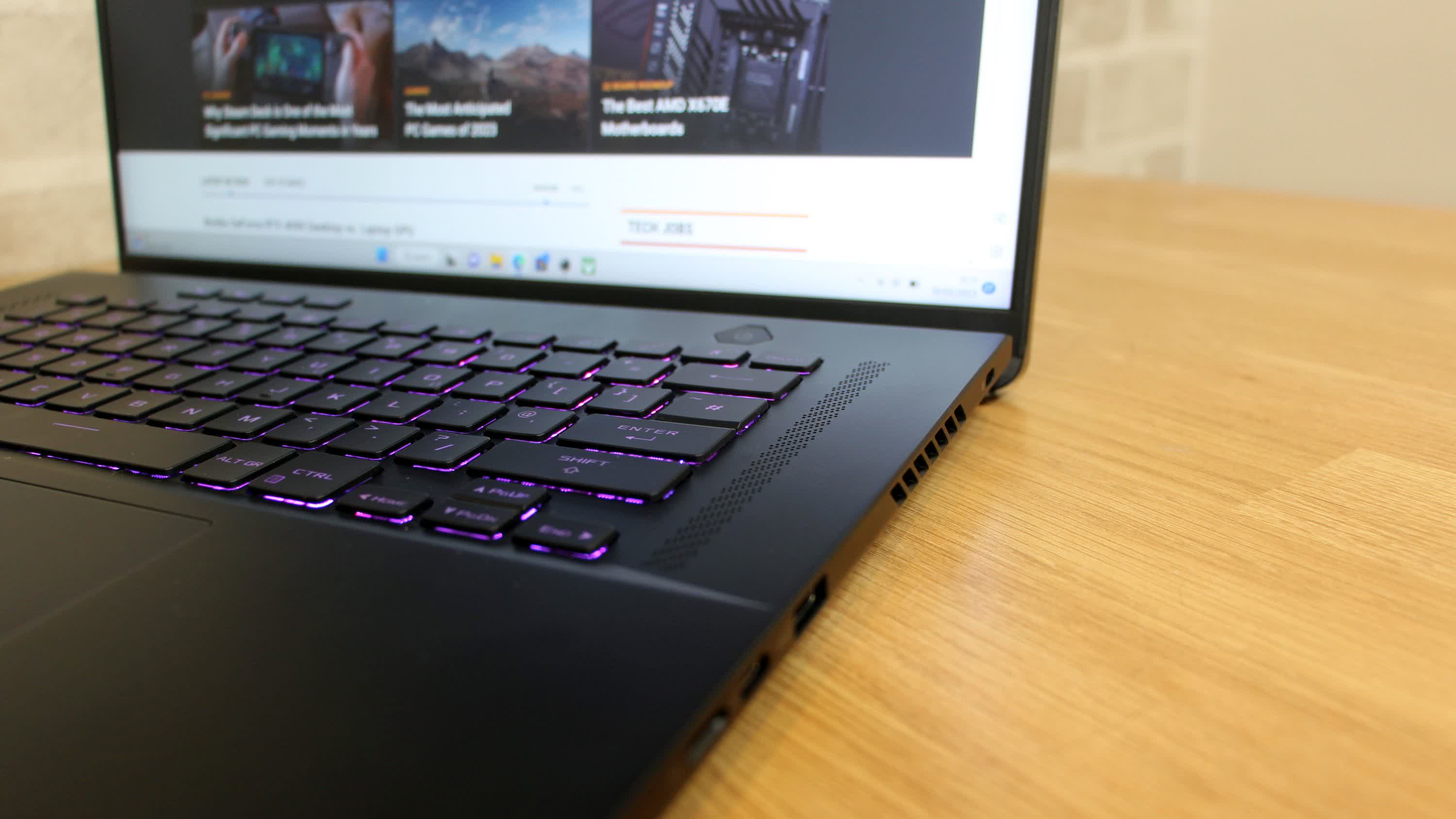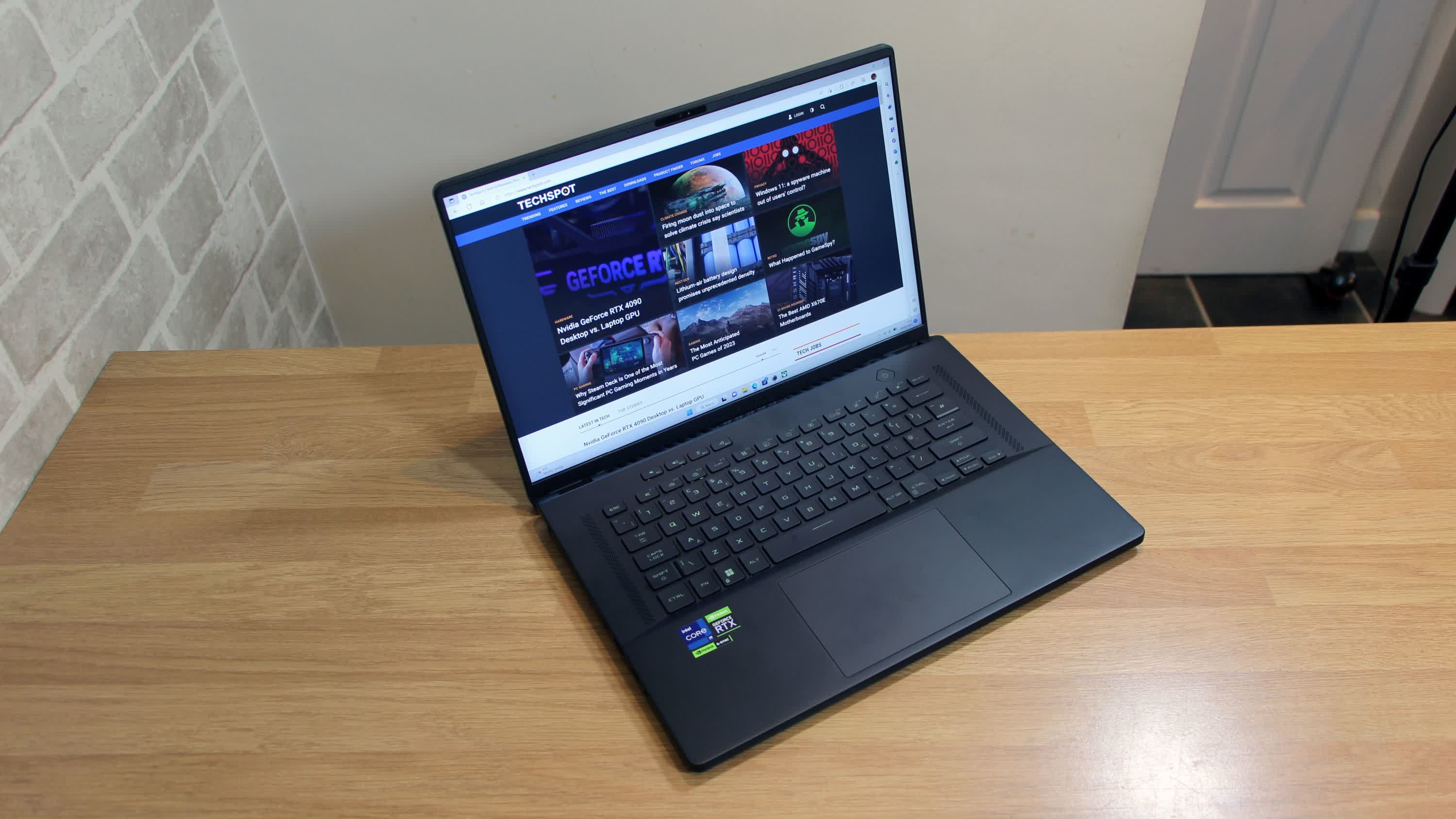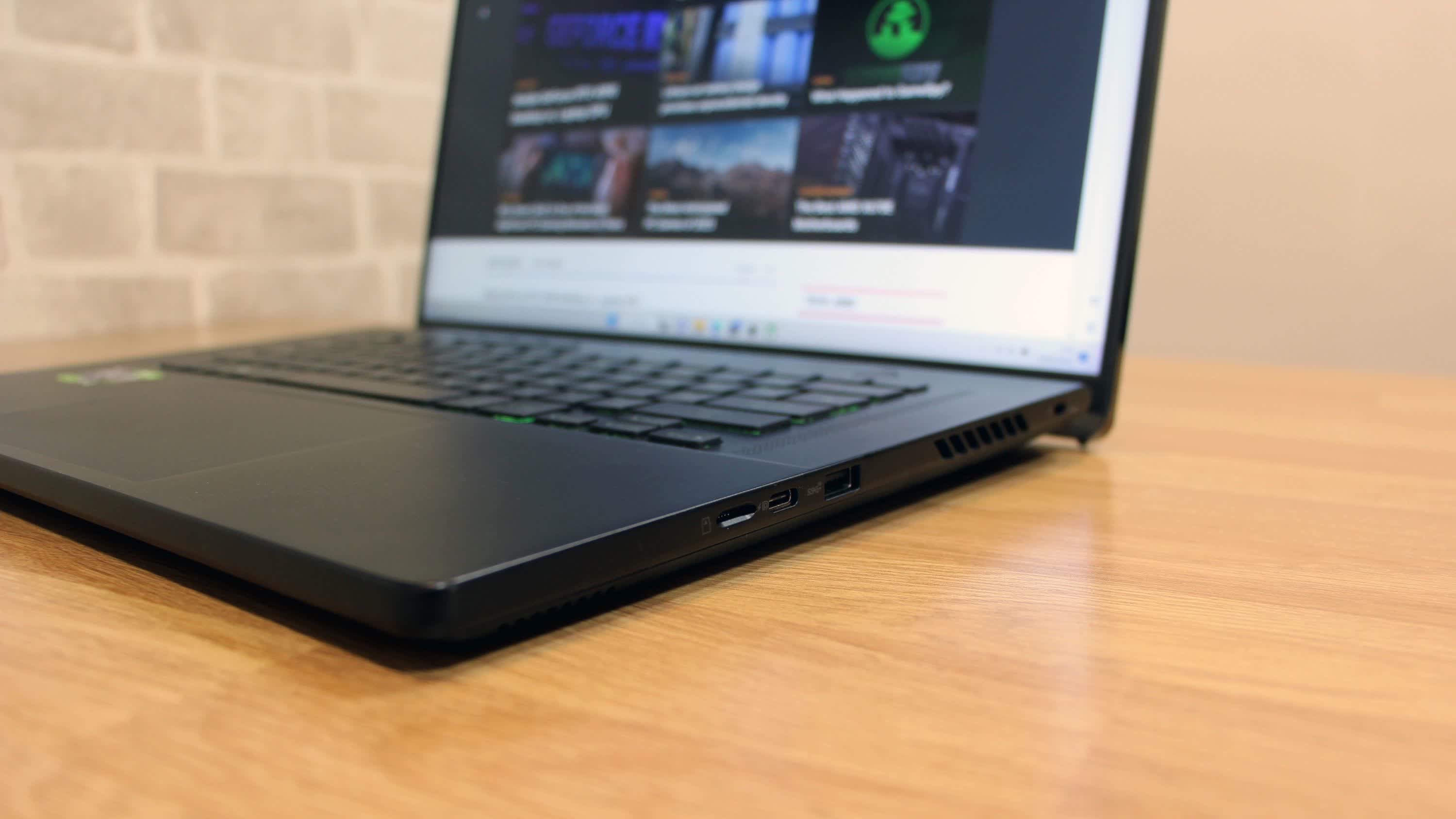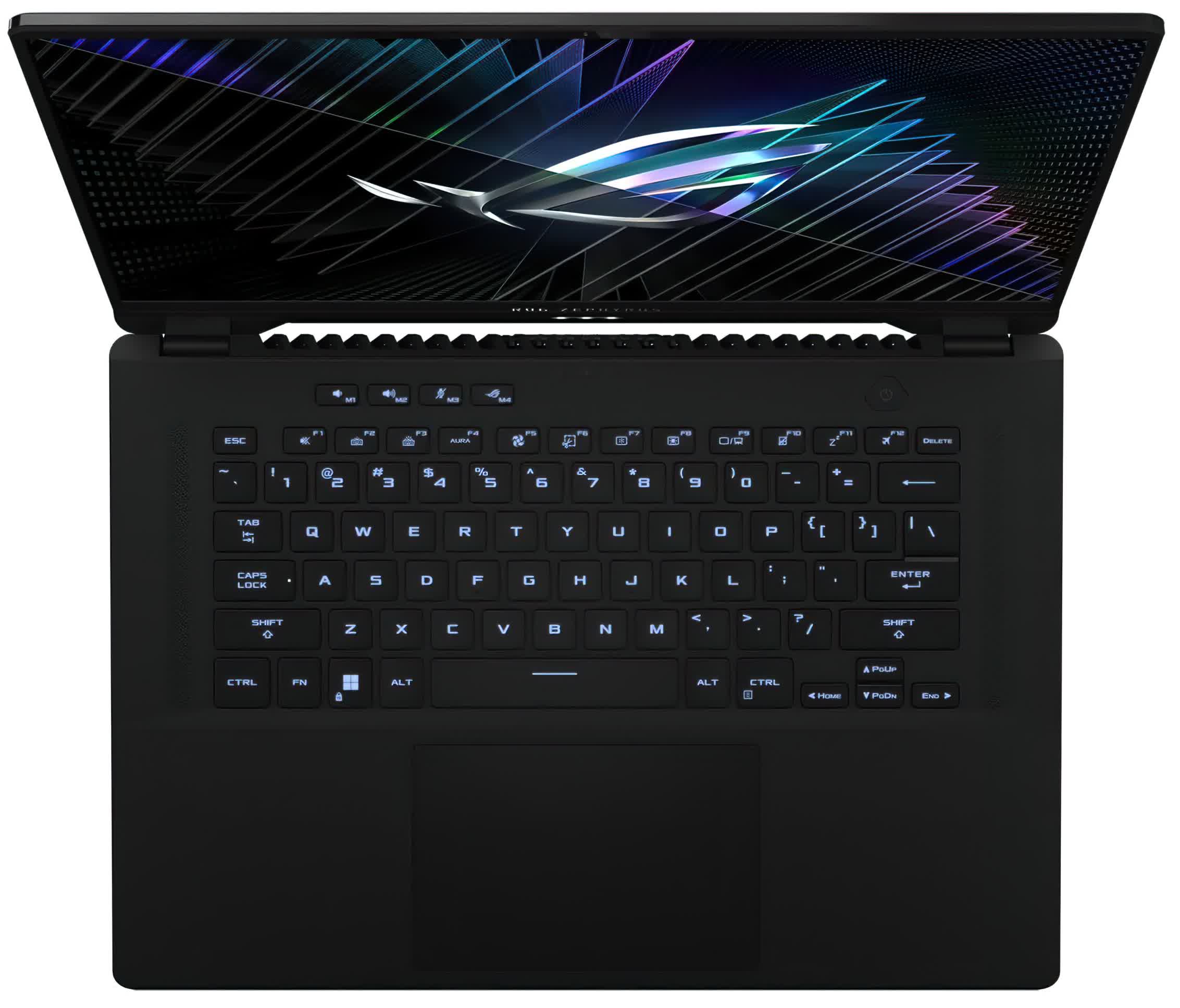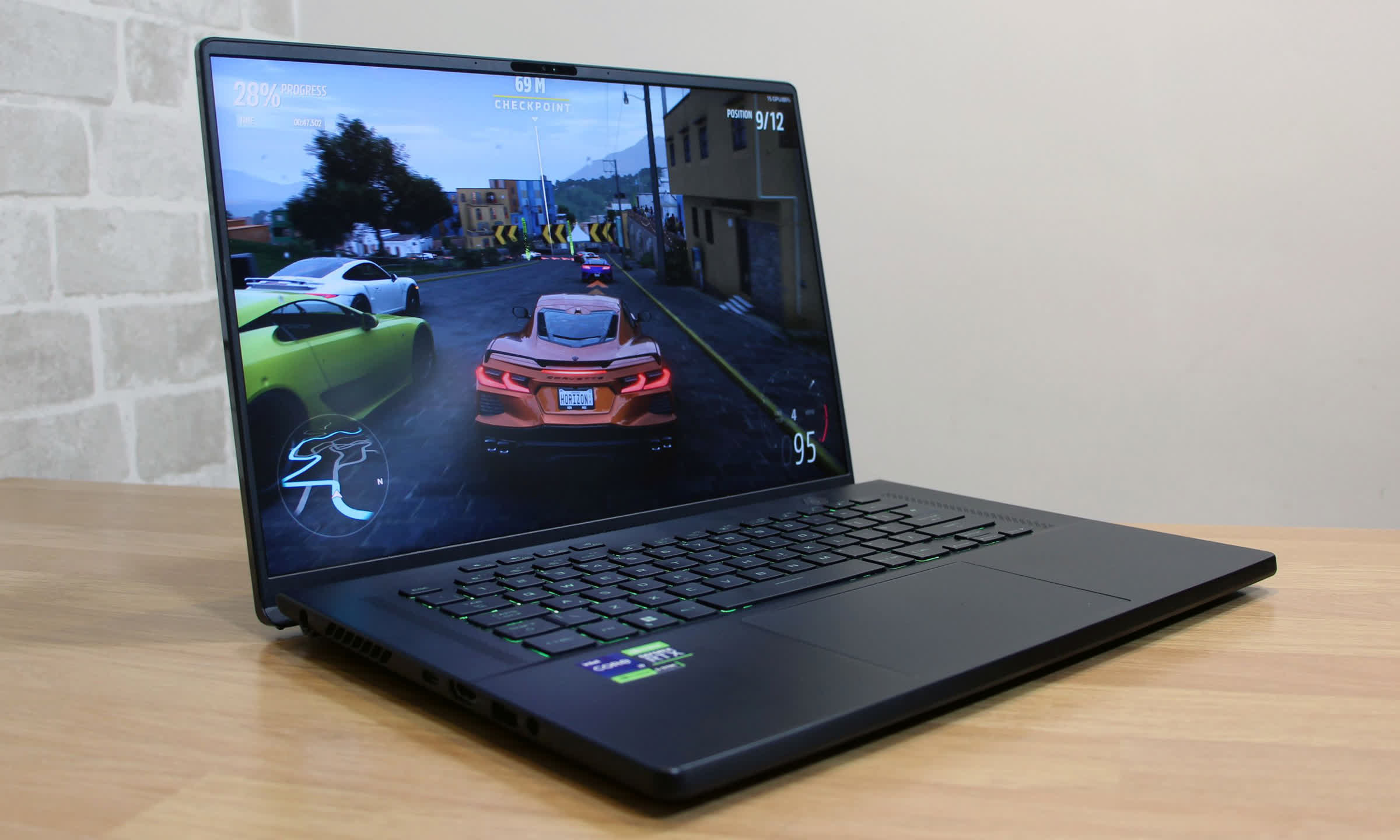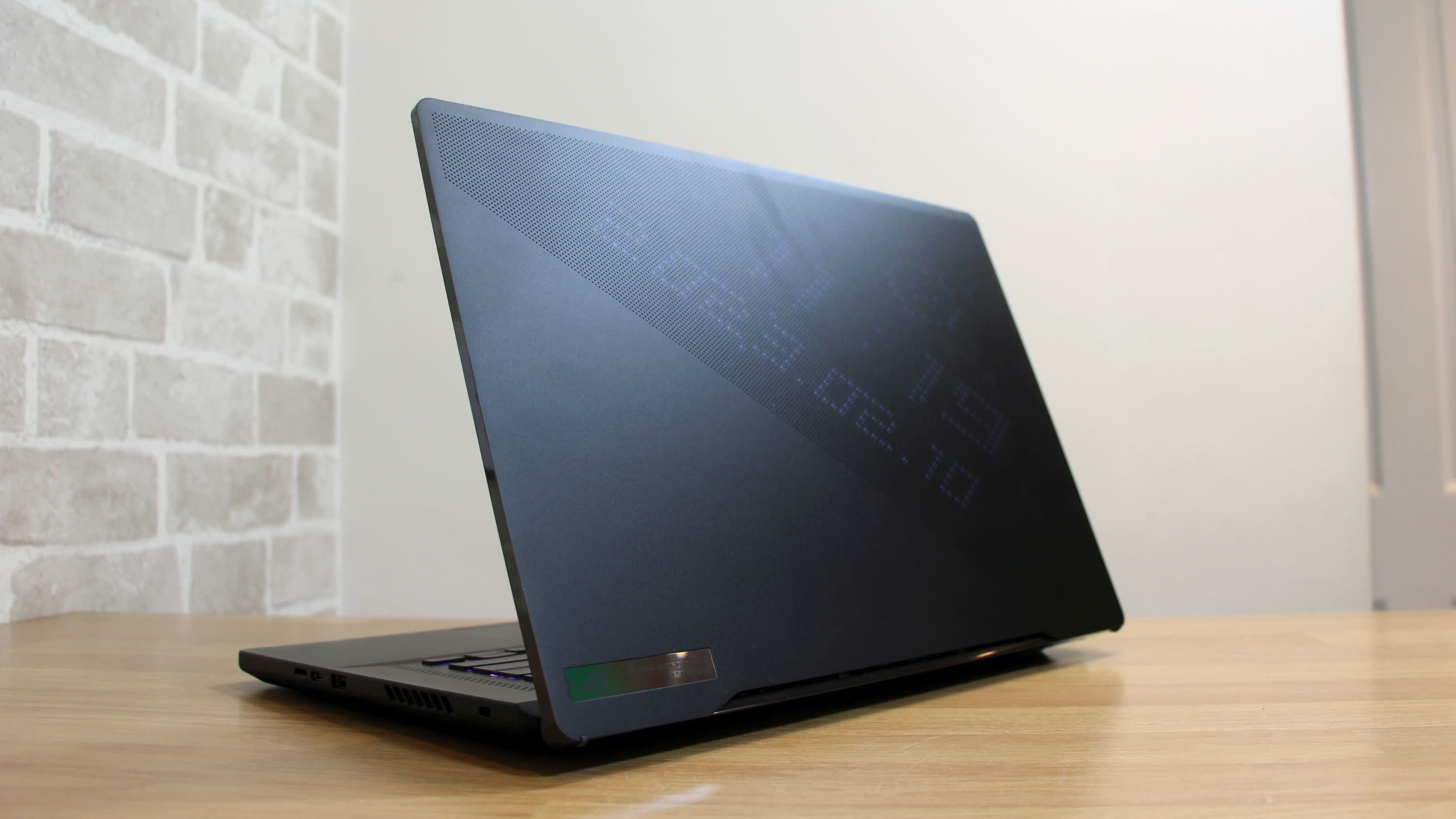Many people associate the Asus ROG range with big, bold and bulky gear, but it doesn't always have to be that way, as shown by the Asus ROG Zephyrus M16. On the outside, you'll find a sleeker and more mature design than on most other ROG devices, and on the inside the Zephyrus M16 deploys top-end internals that push the envelope in terms of speed and quality.
Indeed, it's on the inside where Asus has done most of the work on this year's M16 (model GU604). The new Asus laptop comes in three flavors, with Nvidia's GeForce RTX 4070, RTX 4080 and RTX 4090 available. Elsewhere, you'll find a new, high-resolution display and Intel Core i9-13900H processor.
As of writing those three models aren't listed at retail, but they're coming soon - and Asus has told us that prices will range from $1,949 to $3,499. Until listings start to appear, we'll have to assume that the RTX 4070 model will cost $1,949 with the RTX 4090 machine occupying the top spot and the RTX 4080 version in the middle.
These gaming laptops are not cheap, but the prices aren't too bad when you consider competitors. The Razer Blade 16 with the RTX 4090 costs $4,299, for instance, and the Alienware m16 will likely have a similar price.
In our RTX 4090 Laptop GPU review we used the monster MSI Titan GT77, which outpaces the Asus thanks to an i9-13950HX processor and 64GB of memory, but it'll cost $5,299. Even if that $3,499 price rises a little, the Asus may still emerge as one of the more affordable RTX 4090 options - but is it worth the cash?
Features and Design
The Zephyrus M16's aesthetics haven't changed much from last year's model and that's to say this laptop still looks great. The enclosure uses dark, matte-black aluminum, the logos are small and discreet, and the only lighting you'll find is on the keyboard. Modest speaker grilles line each side of the keyboard and beneath the display you'll find chunky, slatted cooling vents.
It's got an ergo hinge to tilt the keyboard forward and improve cooling underneath, but we wish Asus would move the status lights - they're below the screen, and the hinge renders them virtually hidden in most situations. Visually, this rig sits closer to the dark visuals of the Razer Blade than the litany of lights you'll find on the MSI.
There's one touch that helps the M16 bridge the gap between subtle notebooks and louder gaming rigs - the AniMe Matrix lid. It installs a layer with 1,711 LEDs behind 18,710 CNC-milled holes and allows users to display animated designs and logos on the lid.
Head into the Asus Armoury Crate app and you can customize the lighting. Animated Asus logos and customizable text are easy to configure, and there are loads of extra downloadable designs. It's even possible to use ROG's Omni mascot as an animated virtual pet.
The matrix screen can use a sound visualizer to reflect your music, and you can even display your battery level, clock, date or your number of unread emails on the lid - although why you'd want useful information on the back of the display is anyone's guess. It only runs in white, too, so don't get any ideas about animated RGB LED designs.
Asus has improved the Matrix lid for this year's model - more milled holes means more detail - but it's still just a gimmick. Asus says this feature will only be available on some models, and the website only lists it as a feature on the RTX 4090 model. Happily, if you do end up with unwanted lighting, the Matrix is easy to deactivate.
For many people who want a subtle device that's a boon, and the M16's build quality remains exceptional. Try to flex the lid or base and you'll have to exert plenty of effort before anything moves.
At 5.07 pounds, the M16 is light considering the hardware inside - the Razer Blade 16 and Alienware m16 both weigh 5.4 pounds and the MSI Titan GT77 sits at a beefy 7.2 pounds. If you don't have the AniMe Matrix screen, that weight drops to 4.6 pounds. Even after more next-gen laptops launch, the M16 could end up as the lightest RTX 4090 laptop available.
Its 22.9mm thickness isn't bad, either - a tiny bit thicker than the Razer but slimmer than the Alienware and MSI notebooks.
Flip the slim chassis over, though, and you'll find another practical issue. Lots of people will want to upgrade their notebook, and the M16 has pairs of PCI-E 4.0 2280 M.2 sockets and RAM slots alongside its wireless chip, but Asus makes it hard to get inside the Zephyrus. Fifteen Philips screws secure the base, and seven sit beneath rubber pads that are very difficult to remove without scratching the base.
At first it looks like a smaller section of the base can be removed for component access, but that's not the case. To get inside you'll have to pull away the entire base panel, and it's very tricky.
Overall, then, not much has changed about the M16 from last year. It's still a good-looking, robust notebook that's slimmer and lighter than most of its peers. But that internal access is disappointing and the AniMe Matrix is a gimmick that adds weight, so more work in the design lab is needed.
The Display
You will find progress in the display department. Last year's M16 had a 2560 x 1600 IPS display with a 165Hz refresh rate, 3ms response time and 400-nit peak brightness level. This time around, gamers get a Mini LED panel with the same resolution and response time, a beefed-up 240Hz refresh rate with Nvidia G-Sync, and a quoted brightness level of 1200 nits.
Those are big improvements. The Mini LED panel has 1,024 dimming zones and should combine with the hefty peak brightness to deliver a significant boost to HDR games and movies. The refresh rate will sate most esports enthusiasts, and only the keenest players will want to drop the resolution in favor of a 360Hz or 480Hz refresh rate.
The 2560 x 1600 resolution supplies sharpness during gameplay, and the 16:10 aspect ratio adds a little height for more immersive gaming and easier working.
Benchmarks don't disappoint. In SDR mode the display's brightness level of 618cd/m2 is vast and sits alongside a miniscule black point of 0.027cd/m2. The resulting contrast ratio of 22,888:1 is mighty, and it combines with the Mini LED's 1,024 dimming zones to deliver incredible depth, nuance and brightness - the bold highs and sensational lows make any game or movie look fantastic.
Head over to HDR mode and you'll see a brightness level just beyond the quoted Asus figure of 1,200cd/m2 and even better contrast, so HDR games look even better.
Colors are great, too. The M16's display renders 100% of the sRGB gamut at 151.1% volume and 98.6% of the DCI-P3 space at 107%, so it has the chops to produce punchy versions of almost every shade required by games and media. It can't quite handle the Adobe RGB space thanks to an Adobe coverage level of 87.2%, but that's no surprise for a gaming laptop. Similarly, the Delta E of 3.65 is good enough for games and mainstream creative work, but not accurate enough for tough design tools.
It remains to be seen if the M16's quality will be beaten by the rest of this year's notebooks. But, right now, this is one of the best laptop panels ever, with incredible vibrancy and depth, sensational detail and nuance in SDR and HDR situations and a solid combination of resolution and refresh rate. It knocks any IPS panel into a cocked hat and you'll only get anything better if you switch to OLED instead.
It's a tremendous screen, but you've still got options elsewhere. The M16's biggest rival here is the Razer Blade 16. That laptop also uses Mini LED technology, but it goes beyond the Asus with two operating modes: gamers can switch between a 3840 x 2400 option that runs at 120Hz and a 1920 x 1200 resolution at 240Hz. The Razer's 1000-nit peak brightness falls a little behind the M16, but those dual modes add versatility. Given Razer's screen strength in the past, it's sure to provide a strong challenge to the Asus.
The MSI GT77 falls behind. Its 2560 x 1440 panel runs at 240Hz, but it's IPS. And while you do get Mini LED at 3840 x 2160 in other MSI GT77 rigs, that screen only runs at 144Hz. While the Alienware comes with three panels, including a 480Hz option, they're all IPS too.
Bear in mind that not every Asus has the superb Mini LED panel. In the US you'll find it on the RTX 4090 and RTX 4080 machines, but the RTX 4070 has an IPS screen. It shares its resolution, refresh rate and response time with the Mini LED version, but it won't be as bold.
You'll always get good speakers, at least. The Zephyrus M16 has pairs of 2W tweets and 2W woofers, and you get bold bass, detailed treble and reasonable top-end performance with lashings of volume. This audio kit matches any other gaming laptop and is easily good enough for gaming, although if you're an audiophile who wants to nit-pick you'll wish that the top-end was a bit more robust and a little less tinny.
Input and Connectivity
The Zephyrus M16's right-hand edge has one USB 3.2 Gen 2 Type-A port and a USB 3.2 Gen 2 Type-C port that also handles DisplayPort and 20V/5A charging. You'll also find a microSD slot on the right-hand side. Switch to the left and you'll discover another full-size USB port, a Thunderbolt 4 connector, an HDMI 2.1 output for 4K/120Hz and 8K/60Hz gaming, a headphone jack and the power socket.
Internally, the Asus deploys triple-band 802.11ax wireless and Bluetooth 5.2, but there's no wired internet. Above the display is a 1080p webcam with Windows Hello functionality.
For everyday gamers, that's fine. The MSI and Razer machines include one additional full-size USB port. The MSI and Alienware both add 2.5Gbps wired internet and have two Thunderbolt ports, and all three competitors have SD card slots. The MSI also includes a fingerprint reader, which is missing from the Asus.
The ergonomics are a bit inconsistent, too, although we'll start with the positives. The typing experience on the M16 is good: the buttons have 1.7mm of satisfying movement, they're fast and consistent, and the robust base makes them bounce back quickly. It's easily good enough for hammering through frantic games.
Look around, though, and you'll find weaknesses. There's no numberpad, the cursor keys are small, and the Enter key is single-height. The trackpad is large and accurate, but its buttons are too soft to replace a good gaming mouse.
If the keyboard doesn't suit, you have options on other notebooks. The Razer Blade 16 offers a near-identical layout to the Asus but adds per-key RGB lighting that outstrips the single-zone illumination on the M16. The Alienware is available with an optional Cherry MX low-profile mechanical keyboard that's snappier and more robust.
At the top of the tree, the monstrous MSI delivers Cherry MX mechanical hardware by default and it's got a numpad and per-key RGB lighting.
We're not saying that the M16's keyboard is bad, because it's a good gaming unit. But plenty of other machines are better, and this is one area where the exterior could benefit from significant changes.
Performance
The Nvidia GeForce RTX 4090 laptop GPU is a beast, with 9,728 shader units, 16GB of memory and 76 RT cores. If you'd like to delve into the AD103 core, head here for our in-depth review. Inside the Zephyrus M16, the RTX 4090 rattles along with a 120W power limit and 25W of dynamic boost. Those numbers are hardly modest, but they do fall behind the unfettered GPU, which ran 150W and 25W in the MSI. It will also run at those levels in the Razer Blade 16 and Alienware m16.
The Intel Core i9-13900H deploys six P-Cores with Hyper-Threading and a top speed of 5.4 GHz alongside eight E-cores. The M16 has 16GB of dual-channel 4800MHz DDR5 memory and a 1TB Samsung PM9A1 SSD with superb read and write speeds of 7,049 MB/s and 5,152 MB/s.
The RTX 4090 - even in this relatively modest guise - can drive virtually any top-end game. In Assassin's Creed Valhalla at 2560 x 1600 and Ultra settings the Asus ran at 88 fps, and it hit a mighty 101 fps in Horizon Zero Dawn at Ultimate settings.
In Guardians of the Galaxy, the Asus averaged 108 fps at 1600p, it topped out at 106.9 fps in Forza Horizon 5, and a Rainbow Six Siege average of 260 fps is a stunning score that proves the M16's esports power.
You'll be able to play any top-end, single-player game here without compromising on most of the graphics settings - ray tracing, DLSS and top graphics options will run smoothly. You can also output to 360Hz panels and run most esports titles at the speeds required.
You'll only hit trouble if you want to deploy demanding anti-aliasing settings or if you'd prefer to output to 4K screens, VR headsets or widescreens without fiddling with graphics options.
In isolation, these results make the M16 sound potent, but a look at the wider market brings the Asus back down to earth...
In Red Dead Redemption 2 at 1080p and High settings, for instance, the M16 averaged 109.67 fps, but the full-power RTX 4090 in the MSI Titan hit 132 fps. In Horizon Zero Dawn's 1080p Ultimate test the M16 averaged 118 fps, but the Titan topped out at 143 fps. In Guardians of the Galaxy at 1440p the M16 hit 112 fps, but the unfettered RTX 4090 averaged 150 fps.
The pattern repeated throughout our tests. And at this TDP the M16's RTX 4090 couldn't always overhaul the full-power RTX 3080 Ti laptop GPU, either - in Horizon the M16's 118 fps score was only two frames faster. Its Forza Horizon 1440p result of 110.1 fps easily beat the RTX 3080 Ti and the RTX 4090 was also much quicker in Red Dead Redemption 2, but it fell behind in Guardians of the Galaxy.
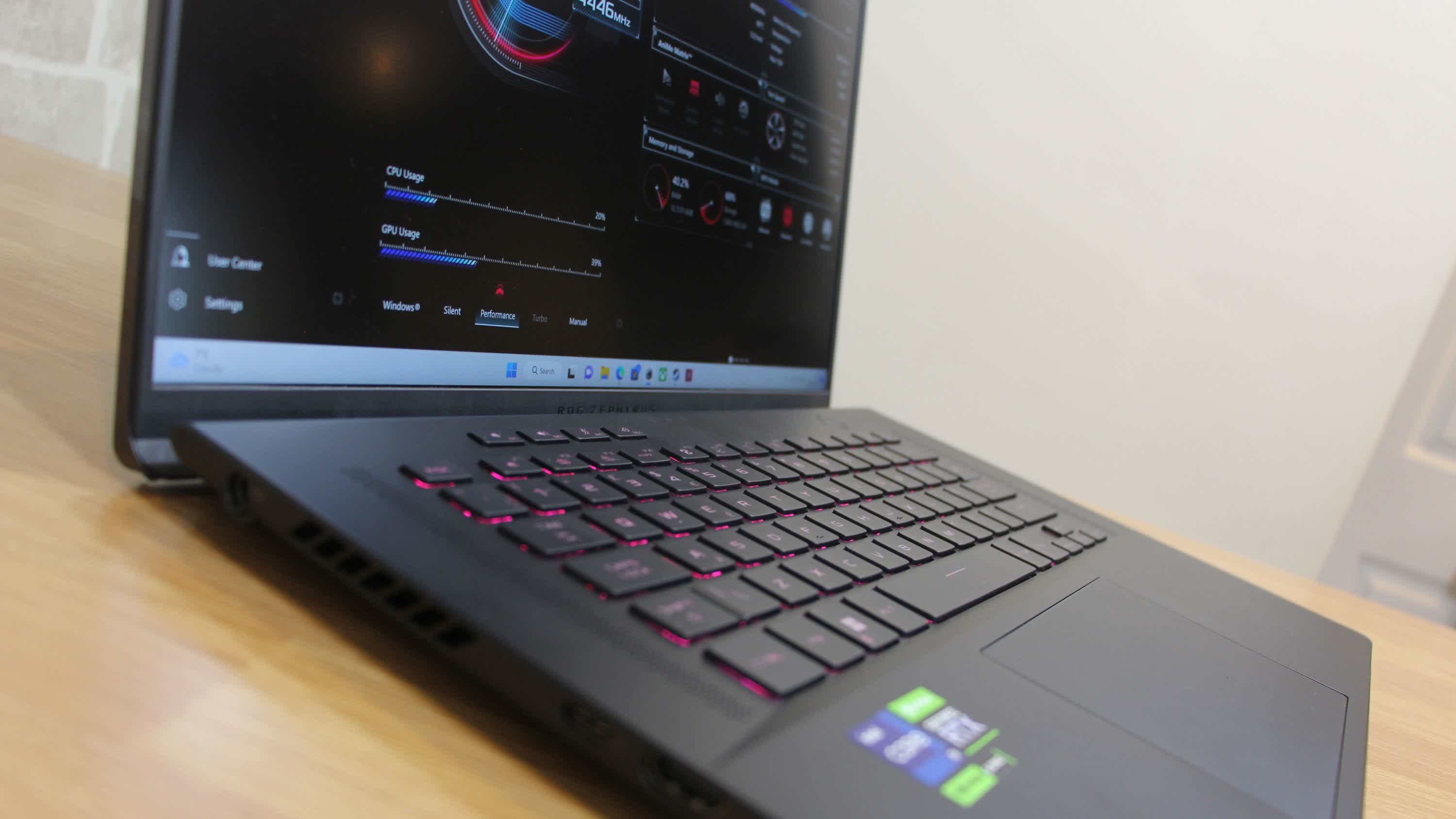
All of these results were recorded using the M16's default "Performance" mode, and that option causes big issues if you want to get the best pace possible from the RTX 4090: in this mode the M16's GPU only uses about 85W of power with a little more for dynamic boosting. That's hardly different from the weak 80W version of this GPU that Nvidia is making available to laptop manufacturers.
Switching to the rig's "Turbo" mode makes an enormous difference, because it allows the RTX 4090 to hit the Zephyrus M16's full 120W GPU TDP...
The M16's original Horizon Zero Dawn 1600p score of 101 fps rose by ten frames with Turbo mode enabled. We recorded a nine-frame leap in Forza Horizon 5, and the rig's 260 fps Rainbow Six Siege average rose to 297 fps. The most profound improvement came in Assassin's Creed Valhalla: the rig's original 88 fps average rose to 107 fps.
The improvements aren't enough to help the M16 overhaul the full-power RTX 4090 in the MSI - the M16's Horizon score improved to 122 fps, but the MSI still hit 143 fps and the MSI remained 20 fps quicker in Forza. However, it does deliver a significant boost and helps this RTX 4090 outpace the RTX 3080 Ti.
Synthetic tests highlight the power difference. In Performance mode the M16 scored 14,298 in 3DMark Time Spy - in Turbo mode it hit 18,195.
The M16 also has Windows and Silent options. The Windows mode is a good middle-ground that delivers solid everyday gaming performance thanks to a TDP that hovered at around 70W, while the Silent setting kept GPU power levels sitting at about 80W and it kept the noise down - but it saw internal temperatures skyrocket, so it's tricky to recommend.
Lots of people buy gaming laptops for work and play, and the M16 has enough CPU power to tackle most productivity and content-creation tasks.
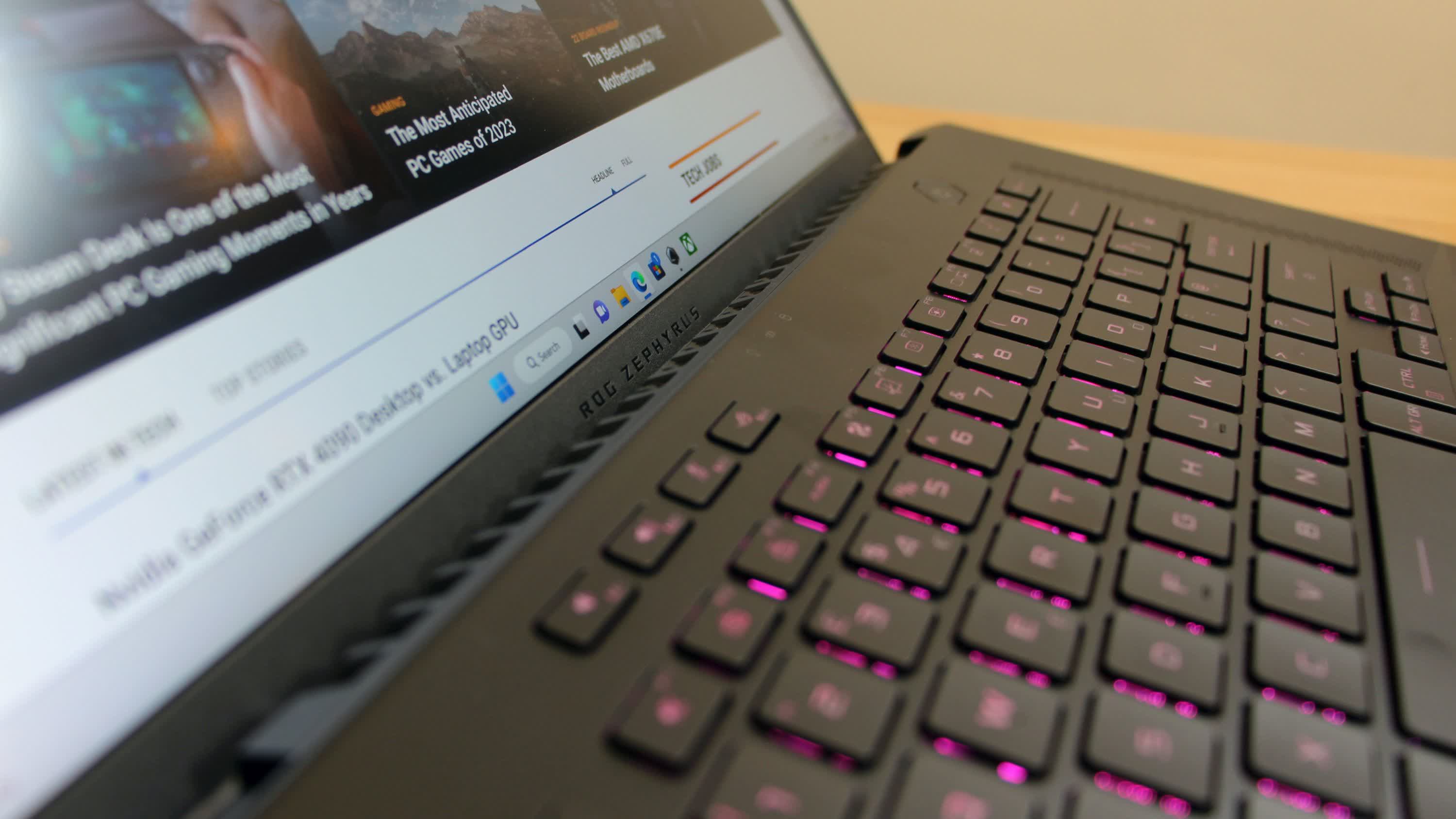
In Cinebench R23 and in the M16's default Performance mode the M16 delivered single- and multi-core results of 1,967 and 16,415, with the former result easily outpacing any last-gen Intel chip and the latter sitting only slightly behind the full-power version of the i7-12700H. Switch on Turbo mode and that score improves to 19,175, which is far better than the older Core i7 CPU and the Core i9-12900HK.
The i7-13900H keeps impressing. Its Matlab result of 0.8784 in Performance mode beat both 12th-gen CPUs. Its Excel result of 6.39s matched those chips and improved to 6.19 in Turbo mode. Its PCMark 10 Applications result of 14,732 beat the i7-12700H and improved to 15,325 in Turbo mode, with those results not far behind the i9-12900HK.
The M16's 7-Zip Compression score of 63.4MB/s is reasonable and rose to 75.5MB/s in Turbo mode, with the latter result able to compete with almost anything Intel offers. It couldn't quite keep up in the decompression tests, but its best score of 913.7MB/s is no disaster.
The i9-13900H is reliably fast. In the Zephyrus M16's default mode it's got the power to tackle most content creation workloads and multitasking situations, and if you deploy Ultra mode it will outpace almost any other chip in its class. You'll only get more power with a CPU like the i9-13950HX, but few people actually need that speed and laptops like the MSI and Razer are pricier than the Asus.
Thermals and Battery Life
As expected, the Zephyrus M16 was at its loudest in Turbo mode. In this mode and in the trickiest games the fans settled at noise levels near to 55db, and the noise was high-pitched and irritating - fine if you've got a noise-canceling headset but problematic if you rely on the speakers.
Retreat to the default Performance option and the noise level is on the lower end of the scale when it comes to high-end gaming laptops. You won't have any issues even if you're using the speakers rather than a headset.
The Windows option drops the noise further, and the Silent option almost lives up to its name, with extremely quiet operation. That silent mode, though, is where the M16 encounters its biggest heat problems, because it keeps GPU speeds relatively high but cuts back fan pace. If you play games in this mode you'll find that the metal above the keyboard and underneath the laptop becomes almost too hot to touch.
The Zephyrus M16's external panels are warm when you play games in every other modes, too - you'll certainly notice the heat around most of the chassis after a long gaming session - but the Silent option is the toastiest by some distance.
Switch over to processing tasks in Turbo mode and the noise levels are just as high as during tough gameplay. Happily, in every other performance mode the M16 was quieter when processing than when gaming.
While the i9-13900H didn't hit its theoretical speeds in tough workloads, its top single-core pace of 5.1 GHz is excellent and its multi-core speeds ranged between 3.6 GHz and 4.3 GHz depending on the performance mode. All of those clocks enable solid working ability across every power option.
Asus hasn't changed the Zephyrus M16's 90Wh battery for this year's model, so don't expect much here. With the display ramped up to maximum brightness we got through an hour and fifteen minutes of gameplay, and that figure only improved by 14 extra minutes with the brightness dialed down. Run a particularly tough title that challenges the internals and those figures will dip beneath an hour.
In a modest work test with the display brightness lowered the Asus lasted for just over 5 hours, but that figure dropped by an hour with the brightness raised back up. If you want to use more demanding content creation tools, slice an hour off those times. And no matter what you do, don't expect this machine to last until lunchtime while you're working.
Wrap Up
The 2023 version of the Asus ROG Zephyrus M16 makes most of its big changes on the inside, and it gets plenty of things right in that regard. The screen is incredible: a high-resolution, nuanced and detailed Mini LED display that trounces virtually any other portable panel.
Games look fantastic, and the RTX 4090 runs them smoothly, too - even if this relatively slim notebook can't match the beefiest models when it comes to Nvidia's latest GPU.
The Core i9-13900H is a reliably fast CPU, the Zephyrus M16 is a decent thermal performer unless you head over to Turbo mode, and the Asus is slimmer and lighter than almost anything else with this spec. It also maintains great build quality despite its size. And assuming the price remains in the $3,499 range it'll probably arrive as one of the most affordable RTX 4090 notebooks.
You'll certainly get better performance from the RTX 4090 in pricier, larger laptops, but those are probably targeting a different type of gamer's needs anyway. The AniMe Matrix lid is a cool gimmick that adds weight and little else, and the keyboard is good - but lots of other notebooks are much better. The battery doesn't last very long and it's unnecessarily hard to get inside the M16.
As new gaming laptops launch for 2023, the Zephyrus M16 will almost certainly retain its crown as the slimmest, lightest RTX 4090 machine, and that Mini LED display will undoubtedly remain one of the best laptop displays around. And yet we would still hold off a purchase until other RTX 4090 laptops arrive unless this is exactly what you were looking for on a new gaming machine.
Shopping Shortcuts:
- Asus ROG Zephyrus M16 2023 at Asus.com
